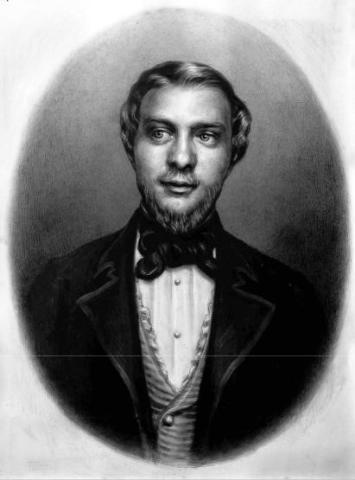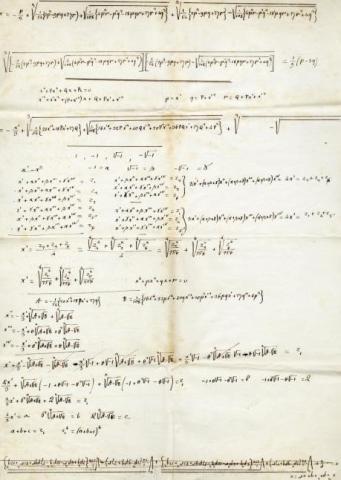The History Column: Giovanni Ansaldo
Giovanni Ansaldo was an Italian entrepreneur, an engineer, an architect and an academic. He started the great tradition of Italian industry that has its greatest achievements in technology and defense. He was mostly interested in solving mathematical problems. We testified this interest with an article appeared on the site of the Foundation taking his name [1]. We briefly sum up the content of this article here.

In the first decades of the XIX century, there was some relevant problems on solving algebraic equations. For sure, there were the Abel-Ruffini theorem, stated by Paolo Ruffini (1765-1822) and definitely proven by Niels Abel (1802-1829) on 1824. This theorem states that the algebraic equations of degree greater than four cannot be solved by simple operations involving at most radicals. Similarly, Carl Friedrich Gauss (1777-1855) proved in 1799 that the number of solutions of the algebraic equations are equal to the maximum degree of the equations itself (fundamental theorem of algebra). Anyway, included in such solutions there must be also imaginary solutions involving the imaginary unit i = √-1. A vast part of mathematics started from these complex numbers, with essential contributions from Euler and Augustin-Luis Cauchy (1789-1857). We should not forget also Giuseppe-Luigi Lagrangia (Joseph-Louis Lagrange) (1736-1813) that introduced an original approach to solve third degree equations using the cubic roots of the unity. This was an approach hinting to group theory as we will see below.

Évariste Galois, before his untimely death in a duel, revolutionized this important area of mathematics, extending the ideas of his predecessors, by introducing group theory and showing definitely that no solution can be obtained in closed form, just using algebraic operations and root extraction, for algebraic equations of degree higher than four. His work became widely known only after its publication, due to Joseph Liouville (1809-1882), on 1846. This has been the start of a wonderful area of mathematics, group theory, that has its effects till today in a lot of fields of application, last but not least the motivations to build the LHC at CERN of Geneva[3]. The theory of groups is also fundamental in the design of codes for radar waveforms [4]–[6].
REFERENCES
[1] M. Frasca, A. Farina, “Le equazioni algebriche all’inizio del 19-esimo secolo. Il contributo di Giovanni Ansaldo”, (in Italian). https://www. fondazioneansaldo.it/index.php/6-i-nostri-archivi-ci-raccontano-2/563-le-equazioni-algebriche-all-inizio-del-19-esimo-secolo-il-contributo-di-giovanni-ansaldo.
[2] The site of Fondazione Ansaldo can be found at https://www. fondazioneansaldo.it/.
[3] F. Close, ”The Infinity Puzzle”, Basic Books, New York, 2011.
[4] S. W. Golomb, ”Obtaining specified irreducible polynomials over finite fields,” SIAM Journal on Algebraic and Discrete Methods, vol. 1, no. 4, pp. 411-418, 1980.
[5] S. W. Golomb, ”Algebraic constructions for Costas arrays,” Journal of Combinatorial Theory A, vol. 37, n. 1, pp. 13-21, 1984.
[6] S. W. Golomb, ”The T4 and G4 constructions for Costas arrays,” IEEE Transactions on Information Theory, vol. 38, n. 4, pp. 1404-1406, 1992.
Authored by Hugh Griffiths
University College London

